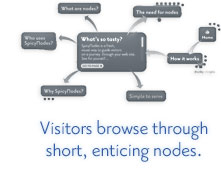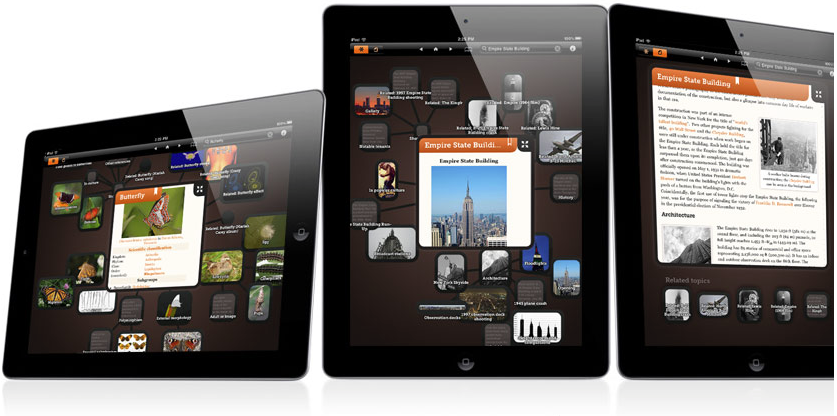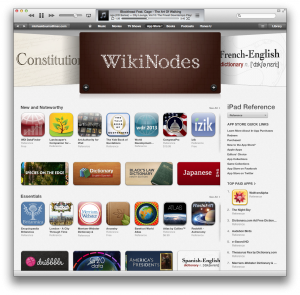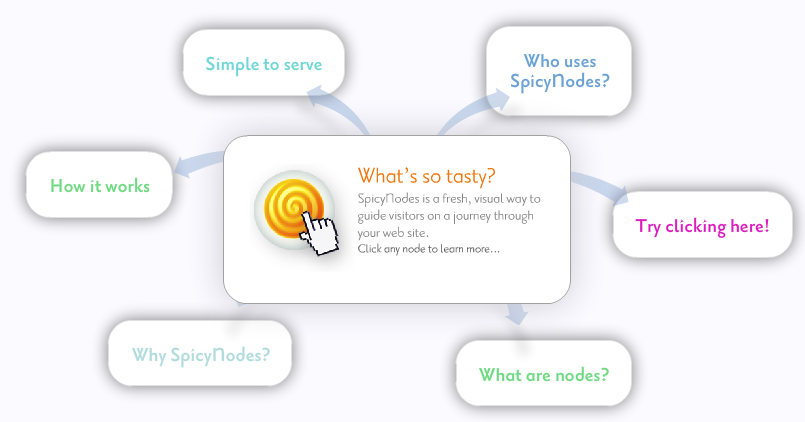Community Embraces New Word Game at Mid-Year Play Day This past Sunday, families at Takoma Park’s Seventh Annual Mid-Year Play Day had the opportunity to experience OtherWordly for the first time. Our educational language game drew curious children and parents to our table throughout the afternoon. Words in Space Several children gathered around our iPads […]
Read moreIDEA’s SpicyNodes project (2009-2016) sought to display online knowledge in a way that mirrored how people interact with information in the real world.
The project expanded the theoretical underpinnings of concept mapping and took shape as an Adobe Flash-based radial mapping tree. Our visualization tool was viewed by more than 40 million web users, and our authoring tool had more than 315,000 user accounts. Users created more than 580,000 nodemaps between 2009 and 2016, when the authoring system was shuttered.
 By displaying a central (parent) node orbited by related (child) nodes, SpicyNodes enabled users to quickly glance at large volumes of information and see how each piece related to others around it, and then quickly drill down for more detail.
By displaying a central (parent) node orbited by related (child) nodes, SpicyNodes enabled users to quickly glance at large volumes of information and see how each piece related to others around it, and then quickly drill down for more detail.
SpicyNodes’ radial tree engine was modified using force-based algorithms, bias controls, and a variable pivot point. It enabled non-linear browsing, allowing users to jump from node to node. As the user browsed, nodes appeared and disappeared, and the layout rearranged to fit the visible field.
In 2009, SpicyNodes launched as a web-based data visualization tool used by individual and organizational subscribers to create content portals, mind maps, sitemaps, and even poetry. Along with the product, IDEA provided guides for students, teachers, developers, copywriters, and academics. The SpicyNodes community forum allowed users to post questions and share nodemaps.
SpicyNodes was praised by ALA Techsource for its effort to “make poetry, including its history and forms, more engaging and interactive.”
Spicy Nodes is a concept map presentation tool that allows the users to link and embed pictures, websites, and more into the overall presentation. Easy to use and fun to show, Spicy Nodes is whole new way to present your information.

 That same year, SpicyNodes formed the basis for IDEA’s WikiNodes iPad Wikipedia browser, which was named “New and Noteworthy” in Apple’s App Store the week of May 5, 2011; chosen as a “Staff Pick” by Apple’s U.S. App Store for two weeks starting May 28, 2011; and featured as a “Reference” app in a list of “Apps for Teachers” the week of June 29, 2011. iPad Insight called it “a light feeling, fun and different take on Wikipedia.” WikiNodes was downloaded and installed more than 29,000 times.
That same year, SpicyNodes formed the basis for IDEA’s WikiNodes iPad Wikipedia browser, which was named “New and Noteworthy” in Apple’s App Store the week of May 5, 2011; chosen as a “Staff Pick” by Apple’s U.S. App Store for two weeks starting May 28, 2011; and featured as a “Reference” app in a list of “Apps for Teachers” the week of June 29, 2011. iPad Insight called it “a light feeling, fun and different take on Wikipedia.” WikiNodes was downloaded and installed more than 29,000 times.
For those using mobile devices, the app WikiNodes provides a […] search tool, but with the added functionality of note-taking and the ability to share articles via email, Twitter or Dropbox. The note-taking feature is particularly interesting, with students able to add text, visual or audio notes. These notes are then able to be added to a ‘presentation’, so that they may be shared with others.– ResourceLink Brisbane Catholic Education,
October 29, 2015
When Encyclopedia Britannica launched its app in 2011, our innovation did not go unnoticed by Wall Street Journal technology writer Walt Mossberg, who noted that Britannica’s “kind of visual array of related items isn’t a new idea. In fact, there is an iPad app called WikiNodes which does something similar for Wikipedia content.”
Over time, many individuals and institutions used SpicyNodes in order to communicate information across a variety of projects, producing interactive syllabi, study guides, flow charts, and other visual representations of complex information for diverse audiences.


